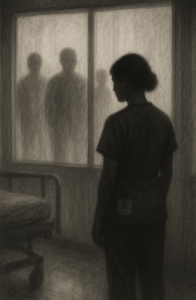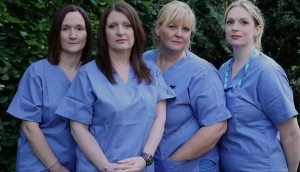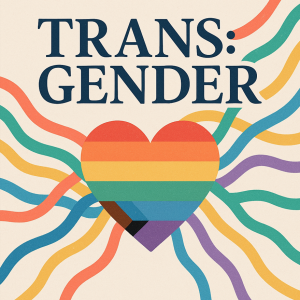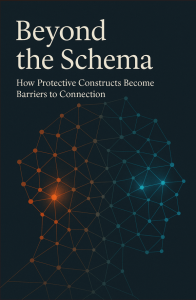
Recently, the UK Supreme Court delivered a decision that’s caused considerable anxiety among trans women across the country. Headlines shouted that we’ve been “banned” from women’s toilets, hospital wards, and domestic violence refuges – but that’s not exactly true, at least for the moment. On 16 April 2025, the Supreme Court ruled that the term “sex” in the Equality Act 2010 refers strictly to biological sex. This ruling does not mandate our exclusion from single-sex spaces; it simply makes it easier for service providers to justify exclusion if they can demonstrate it’s both “necessary and proportionate.”
Where We Stand: Legal Protections
Three core protections are currently under threat: the Equality Act 2010, the Gender Recognition Act 2004, and the Human Rights Act 1998. Attempts to undermine Public Order and Harassment Laws are less likely to succeed, as they also protect cisgender people.
The Equality Act has already been weakened. Trans men now face heightened risks of exclusion from both men’s and women’s spaces – a situation trans women are painfully familiar with, particularly when seeking refuge from domestic or sexual violence.
One area often overlooked is the Gender Recognition Act’s reinforcement of Article 8 (right to privacy) under the Human Rights Act. When it comes to wards, hospitals, and other services, any attempt to force trans women into men’s spaces or to expose our histories without consent breaches these protections. If there is any part of the law trans women and activists need to urgently shore up, it is this.
If you’ve heard of the “Sullivan Review,” you know that moves are already underway to strip trans people’s privacy, as well as legal and medical rights. Hospitals have begun requiring patients to answer mandatory questions about gender identity even for emergency care. Know this: you are not legally required to answer such questions.
Challenging the “Safeguarding” Narrative
While cisgender women have won ground on the “safeguarding” narrative, this is not an area where there should have necessarily been an instant win. If we are to push back, and create an urgent and immediate appeal, using the “safeguarding” narrative for ourselves is a clear indication that as a persecuted, at risk, and threatened community, we have all the evidence we need for challenging being placed with men by raising awareness of OUR risks using currently available data.
Trans women experience a risk of sexual assault per year at around 10%, which is roughly 3–4 times higher than the cis-female rate (2–3%). In terms of violent crime, the risk is far greater.
| Trans women experience 3.6× the rate of violent crime that cis women do ³. |
Below is a snapshot of the best population‑level data I’ve found today. Percentages differ because every study defines “sexual violence” a little differently (rape only vs any unwanted sexual contact, hate‑motivated vs all motives, lifetime vs past‑year, etc.), but the same pattern emerges wherever we look: trans women are victimised markedly more often per year than cis women, and at least as often – sometimes more often – over a lifetime.
| Country & data set | Time‑window & definition | Trans women | Cis women | Notes |
| United States – 2015 U.S. Transgender Survey (27,715 total, ≈9,700 TW) | Lifetime “sexual assault” (rape, attempted rape or unwanted sexual contact) | 37 % ¹ | — | Same survey found 47 % for all trans respondents ¹. |
| Past 12 months | 10 % ¹ | — | Comparable national survey for cis women (next row). | |
| United States – CDC NISVS 2016/17 (random‑digit telephone) | Lifetime “contact sexual violence” (rape, sexual coercion, unwanted contact) | — | 54.3 % ² | Broader definition than USTS, so direct %‑to‑% comparison is imperfect. |
| Past 12 months, same definition | — | 5.3 % ² | When you line up time not definition, trans women’s past‑year risk (10 %) is roughly 2× the cis‑female rate. | |
| United States – National Crime Victimization Survey 2017‑18, re‑analysed by the UCLA Williams Institute | All violent victimisation (rape + sexual assault + robbery + aggravated assault) | 86.1 incidents / 1,000 TW | 23.7 incidents / 1,000 CW | Trans women experience 3.6× the rate of violent crime that cis women do ³. |
| England & Wales – Crime Survey for England & Wales, year‑ending Mar 2024 | Past 12 months sexual assault (incl. attempts) | — | 2.6 % of women aged 16‑59 ⁴ | No gender‑identity question is asked, so we use cis baseline only. |
| Britain – Stonewall “LGBT in Britain: Trans” (YouGov poll, 2017) | Past 12 months “sexual assault” | 11 % of trans respondents (majority TW) ⁵ | 2.6 % (CSEW figure above) | Same year & geography → trans women about 4× higher annual risk. |
| Canada – Trans PULSE Canada 2019 (2,873 respondents) | Sexual assault last 5 years | 26 % of trans & non‑binary women ⁶ | 9 % of cis women (2019 General Social Survey) ⁷ | Trans women roughly 3× higher over the same period. |
(Percentages have been rounded to whole numbers for readability.)
Effective safeguarding addresses problematic behaviours, not identities. Solutions like single-user cubicles, staffed facilities, and better lighting benefit everyone without discrimination. Blanket bans fail the proportionality test required by Equality Act Schedule 3 and breach privacy protections outlined in Article 8 of the Human Rights Act.
So, what do we know about the perpetrators of violence against trans women? Surprisingly little, it seems. In both the US and UK, police forces are not required to log an offender’s ideology and often leave the sex field blank. From what we’ve found, perpetrators are overwhelmingly a cisgender, white british man in his late‑20s to late‑40s. He is as likely to be an acquaintance or partner as a random stranger. In the UK, he is more likely than not to use fists, a blunt object, and/or a knife.
| Crown Prosecution Service spreadsheets for the year to Mar 2024 list ≈ 4 in 5 defendants (79 %) as male in prosecutions flagged “transphobic hate crime”. The remainder are female; the file shows no defendants recorded as non‑binary or trans. Crown Prosecution Service |
| CPS tables give a broad mid‑adult profile: about three‑quarters are 25‑59 years old; 10 – 12 % are 18‑24; juveniles (under 18) and over‑60s each account for < 8 %. Police FOI releases in North‑east and South‑Wales forces show the same hump‑shaped curve. HomeHome |
| In the CPS “Demographic data” workbook 2023/24, White British defendants are 85 – 87 % of trans‑hate cases; Black and Asian groups together make up ~10 %. Because ethnicity is self‑defined, small errors are possible. Crown Prosecution Service |
| The majority of incidents that escalate to court are not stranger attacks. Police case files and both Galop and Stonewall surveys show: intimate partners/ex‑partners (~20 %), family or friends (~15 %), neighbours/colleagues (~15 %), with the balance strangers. (This mirrors the pattern in homophobic hate crime.) GalopGalop |
| Police recording systems do not require an entry for political belief. Where courts or media report an explicit ideology, it is most often male‑supremacist, “gender‑critical” or far‑right; but these make up a small minority of total charged cases. The 2023 Brianna Ghey murder, for example, involved two 15‑year‑olds with sadistic fantasies rather than organised extremism. The GuardianLatest news & breaking headlines |
| • England & Wales: police statistics show public‑order assaults (street, public transport, licensed venues) are the single biggest category, followed by assaults in a domestic setting.• Bladed articles are the most common weapon; firearms are rare outside organised crime. The Guardian |
Equality of safeguarding means protecting both cisgender and transgender women equally. It is unjust, improper and unethical to endanger transitioned women by both outing them, and exposing them to intimate spaces with cisgender men who are the main perpetrators of violence. It is astounding that this needs to be said out loud, but transitioned women are valued so little in UK culture today that our endangerment, heralded as “clarity” and “common sense”, is, in fact, brutality.
British Transport Police
Both the reaction by, and reporting of British Transport Police’s almost immediate statement has been highly irresponsible. Headlines like “Trans women to be strip searched by male transport police after UK court ruling“are misleading and harmful, especially for survivors of sexual and physical violence. Our correspondent, Liora, has been in contact with British Transport Police on a fact finding mission, in order to answer questions that many of you may be wondering. We know it’s not unusual for Police to target and harrass trans women, as we have seen in America, and we know of a highly significant case that is happening right now in the UK – the details of which I will share as soon as I am able. The chances of harassment, and cruel and degrading treatment by police, given this policy is huge, and I wouldn’t blame you if you never use the rail service again.
Here’s a copy of the e-mail sent by Liora:
Dear British Transport Police,
I am writing on behalf of Transiness, an organisation dedicated to informing and supporting transitioned women: that is, individuals who have undergone gender-affirming hormone therapy (HRT) and/or lower gender-affirming surgeries (e.g., vaginoplasty).
Following recent reports regarding the British Transport Police’s approach to strip searches involving transgender women, we are seeking specific procedural clarification on behalf of our community. We really need clarity, as the announcement has caused considerable alarm and distress.
In particular, we request detailed responses to the following:
1. Determination of Gender:
- How do officers establish who is transgender and whether a transgender woman holds a Gender Recognition Certificate (GRC) at the time of a search?
- Are transgender women now required to carry proof of their legal gender status in anticipation of potential searches?
- Are officers advised to presume birth-assigned sex without documentation?
2. Default Classification:
- In the absence of a GRC or immediate proof, how are transitioned women’s gender classified for the purposes of determining search procedure?
3. Assignment of Officers:
- Who is authorised to conduct a strip and intimate search of a transgender woman when GRC status is unknown, and when it is known?
4. Safeguards:
- What risk assessments, dignity protections, and psychological safeguards are in place during the strip or intimate search of transgender women, particularly those who may not have access to documentation at the time?
5. Training Provided to Officers Conducting Searches of Transgender Women:
- What specific training have officers and those involved in intimate searches received regarding the legal rights, bodily integrity, and specific anatomical considerations relevant to transgender women, including those who have undergone gender-affirming surgeries (e.g., vaginoplasty, examination of/under transgender women’s breasts)?
- Does this training address trauma-informed practices, psychological risk mitigation, and safeguarding standards specific to transgender individuals?
- Would a male officer be present while a transitioned woman is being vaginally examined?
- Was external expert advice (e.g., from transgender healthcare specialists) consulted in the design and delivery of this training?
- What would be the procedure for managing any immediate health concerns during or following a vaginal examination (for example, pain, bleeding, tissue trauma)?
- Would trans women’s vaginas be examined digitally (i.e., using fingers), by probe, another object, or both? Would the examiner be male or female?
- Is there formal documentation or certification associated with this training?
- If no specialised training has been provided for either strip or intimate searches, please confirm this explicitly.
6. Prevalence: wIn the last 12 months –
- How many transgender women were subjected to a strip search by British Transport Police officers?
- How many transgender women were subjected to an intimate search by British Transport Police officers?
Given the gravity of these concerns, we trust that a transparent and detailed response will be provided in order to reassure our members, at the moment, there simply isn’t enough readily available information.
Sincerely,
Liora Wren
Transiness Correspondent

I know this is a tough time for everyone, and my thoughts are with you all. I wish you all peace and safety.
Resources and Helplines
- Galop: 0800 999 5428
- MindLine Trans+: 0300 330 5468 (evenings)
- Switchboard: 0300 330 0630 (10am–10pm)
- Survivors UK: 02035 983 898: help@survivorsuk.org.
References
¹ USTS 2015 full report, Harassment & Violence chapter – 47 % lifetime any trans, 10 % past‑year; figure 15.16 gives 37 % for trans women
² CDC National Intimate Partner & Sexual Violence Survey 2016/17, Report on Sexual Violence, Table 1
³ Flores et al., Gender‑Identity Disparities in Criminal Victimization, Williams Institute analysis of NCVS 2017‑18
⁴ Office for National Statistics, Crime in England & Wales: year ending March 2024, Section 9 “Sexual offences”
⁵ Stonewall & YouGov, LGBT in Britain – Trans Report (2018), headline findings
⁶ Trans PULSE Canada National Report 2020, p. 4 (“16 % physical, 26 % sexual assault in past 5 years”)
⁷ Statistics Canada, Criminal victimisation in Canada 2019, Table 1 (sexual‑assault prevalence)





